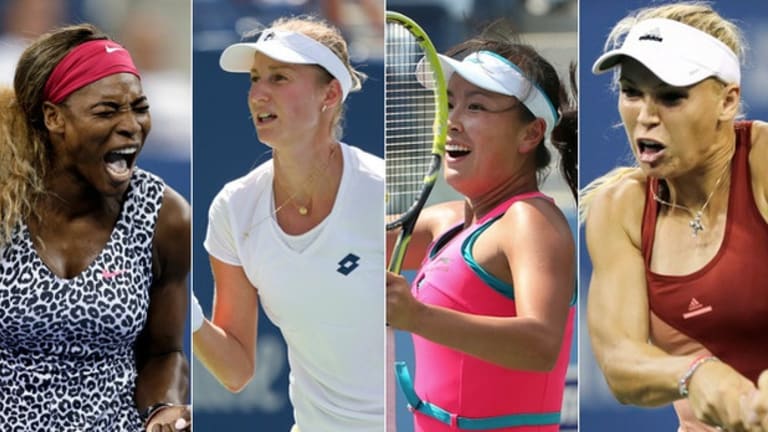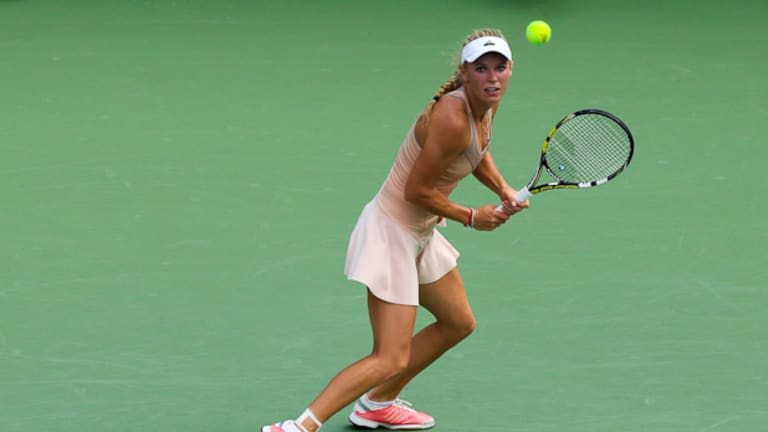NEW YORK—This past weekend I wrote a post about how the women own the first weeks at Grand Slams these days, while the men save their drama for the second week. The WTA gives us competitive matches and startling upsets to start the event; the ATP brings marquee value to close it. As a system for keeping tennis fans entertained over an extended period of time, it works pretty well.
The problem for the women with this scenario is that, by the final few days, it can leave them with more blowout matches than big-name attractions. Unfortunately, this also happens to be the time when more people are tuning in, and more media are writing stories. Stories, inevitably, about how the women can’t hold up their end of the celebrity-player bargain these days.
For nine days, this year’s U.S. Open appeared to be heading in much the same direction. By the end of week one, half of the women’s Top 10 seeds remained, while nine of the Top 10 men were still alive. By Tuesday, Maria Sharapova and her fellow celebrity player Genie Bouchard were gone. Meanwhile Roger Federer, Novak Djokovic, and Andy Murray—as well as celebrity entertainer Gael Monfils—all lived to play another day.
Despite the early carnage, though, the “Who are these people?” women’s narrative never quite materialized. Ekaterina Makarova and Shuai Peng won’t drive ratings in the States, but Serena Williams, making her first semifinal Slam appearance of 2014, certainly will. And so will her friend in the other half, Caroline Wozniacki, a former finalist and current crowd favorite at Flushing Meadows. The Open has been the scene of Caro’s reemergence as a top-level tennis player. If she were finally, suddenly, to win her first Slam, it would be one of the stories of the season.

